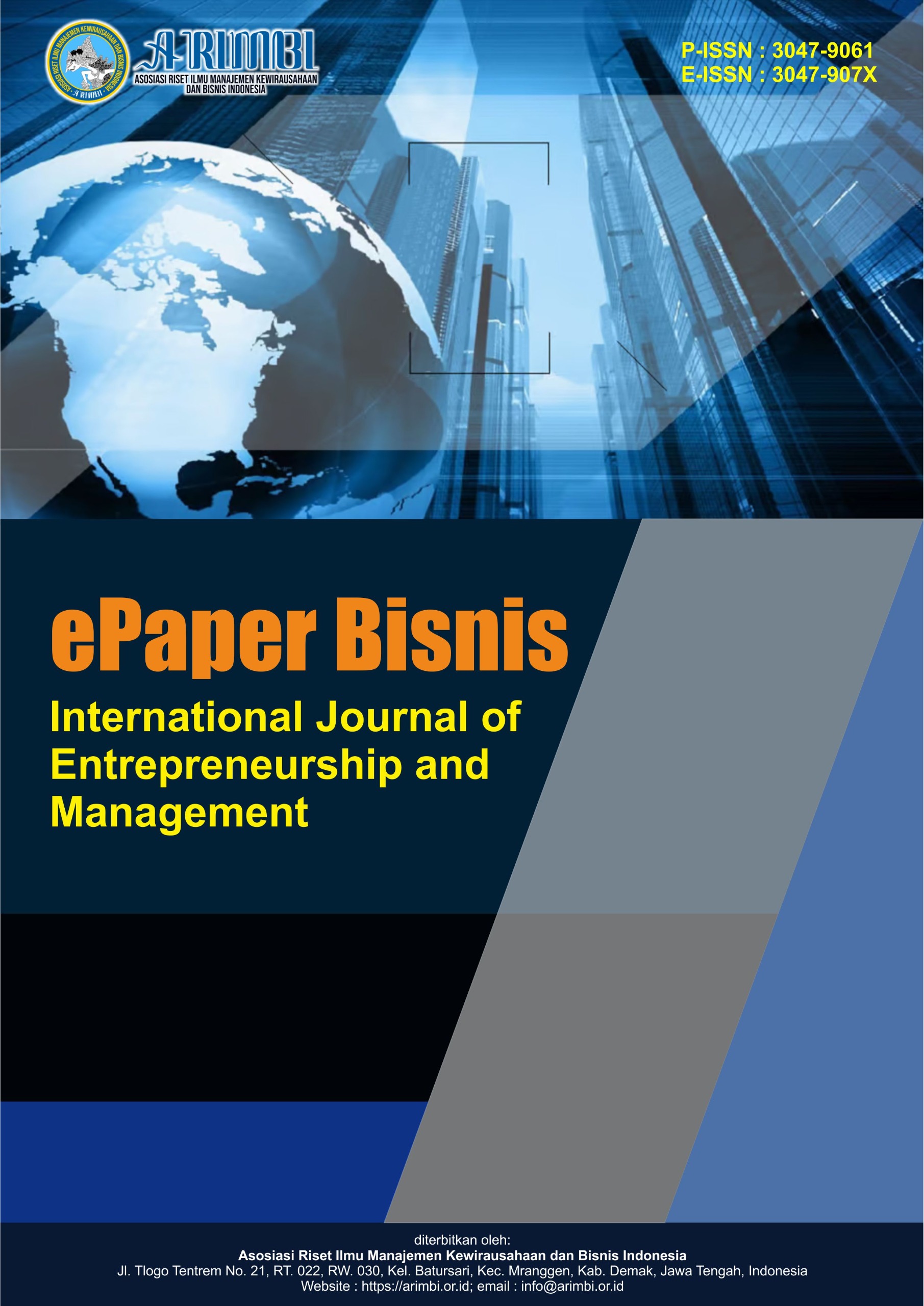Determinants of Tourism and Labor on Regional Revenue in Yogyakarta Special Region after Yogyakarta International Airport
DOI:
https://doi.org/10.61132/epaperbisnis.v2i3.525Keywords:
Local Economy, PAD, Tourism Growth, Tourism Infrastructure, Tourism SectorAbstract
This study examines the connection between the growth of tourism and the income generated locally in the Special Region of Yogyakarta, focusing on the period before and after the operation of Yogyakarta International Airport in 2019. The research problem lies in understanding whether the expansion of transportation infrastructure has altered the determinants from Regional Own-Source Revenue (PAD), especially derived from the tourism sector. The objective is to analyze the influence of tourist numbers, tourist attractions, labor force participation rate (LFPR), and the number of restaurants on PAD across five districts/cities. The study employs panel data regression using data from 2013–2024 and the EViews 12 statistical tool. The findings reveal that the amount of tourists consistently exerts a positive and substantial impact on PAD in both periods, though its magnitude declined after the airport’s operation. Tourist attractions, however, became positively and significantly associated with PAD only in the post-airport period, suggesting a stronger role of destination availability in revenue generation. In contrast, LFPR and the total of restaurants show no significant effect on PAD during either period. These findings highlight a structural shift in PAD sources, with tourism remaining relevant but gradually overshadowed by other emerging sectors such as logistics after the airport’s establishment. The study concludes that while the airport contributed to diversifying economic activity, local governments should optimize tourism potential in parallel with new growth sectors to sustain balanced revenue generation
Downloads
References
Aliansyah, H., & Hermawan, W. (2019). Peran sektor pariwisata pada pertumbuhan ekonomi kabupaten/kota di Jawa Barat. Bina Ekonomi, 23(1), 39-55. https://doi.org/10.26593/be.v23i1.4654.39-55
Ananto, O. (2018). Persepsi pengunjung pada objek wisata Danau Buatan Kota Pekanbaru. Jom FISIP, 5(1), 1-11. https://doi.org/10.32662/gjfr.v1i2.351
Antoro, M. D., Wulandari, N. P., Wicaksono, G., & Akmal, A. I. (2023). The role of restaurant tax on regional income in Yogyakarta. YudishtiraJournal: Indonesian Journal of Finance and Strategy Inside, 3(1), 1-9.
Bachri, B. (2024). Peran hospitality industry dalam pengembangan pariwisata berkelanjutan. Jurnal Pariwisata Dan Budaya, 15(1), 12330. https://doi.org/10.31294/khi.v15i2.25152
Butler, R. (2025). Tourism destination development: The tourism area life cycle model. Tourism Geographies, 27(3-4), 599-607. https://doi.org/10.1080/14616688.2024.2325932
Dwyer, L., Forsyth, P., & Dwyer, W. (2020). Tourism economics and policy. In Tourism economics and policy. https://doi.org/10.4337/9781800377486.tourism.economics
Gössling, S., Scott, D., & Hall, C. M. (2021). Pandemics, tourism and global change: A rapid assessment of COVID-19. Journal of Sustaina-ble Tourism, 29(1), 1-20. https://doi.org/10.1080/09669582.2020.1758708
Hsieh, H.-J., & Kung, S.-F. (2013). The linkage analysis of environmental impact of tourism industry. Procedia Environmental Sciences, 17, 658-665. https://doi.org/10.1016/j.proenv.2013.02.082
Javed, M., & Tučková, Z. (2020). The role of government in tourism competitiveness and tourism area life cycle model. Asia Pacific Journal of Tourism Research, 25(9), 997-1011. https://doi.org/10.1080/10941665.2020.1819836
Maulana, R. A., & Prasetyia, F. (2023). Hubungan kausalitas pariwisata dan pertumbuhan ekonomi di Indonesia: Analisis panel VAR. Jour-nal of Development Economic and Social Studies, 2(3), 665-677. https://doi.org/10.21776/jdess.2023.02.3.17
Pulu, G., Moonti, U., Dai, S. I., Panigoro, M., & Maruwae, A. (2023). Analisis pengaruh sektor pariwisata terhadap pendapatan asli daerah di Kota Gorontalo. Innovative: Journal of Social Science Research, 3(3), 2049-2060.
Puspa Sari Aceh, A., Syahri Ramdhaniah, A., Eka Safitri Sayuti, E., & Asnidar, A. (2022). Pengaruh jumlah kunjungan wisatawan dan ting-kat hunian hotel terhadap pendapatan asli daerah dan PDRB di Aceh. SINOMIKA Journal: Publikasi Ilmiah Bidang Ekonomi Dan Akuntansi, 1(4), 919-932. https://doi.org/10.54443/sinomika.v1i4.455
Rahmawati, A., & Darwis, R. S. (2023). Pemberdayaan perempuan di sektor pariwisata dalam perspektif ekofeminisme. Pekerjaan Sosial, 22(1), 103-115. https://doi.org/10.31595/peksos.v22i1.760
Surya Andriansyah, A., & Moh. Athoillah. (2024). Analisis pengaruh jumlah penduduk, produk domestik regional bruto (PDRB), inflasi dan jumlah tenaga kerja terhadap pendapatan asli daerah (PAD) Kota Malang tahun 2012-2021. Journal of Development Economic and So-cial Studies, 3(2), 552-567. https://doi.org/10.21776/jdess.2024.03.2.17
Suryadana, M. L., & V. O. (2015). Pengantar pemasaran pariwisata. Alfabeta.
Downloads
Published
How to Cite
Issue
Section
License
Copyright (c) 2025 ePaper Bisnis : International Journal of Entrepreneurship and Management

This work is licensed under a Creative Commons Attribution-ShareAlike 4.0 International License.




